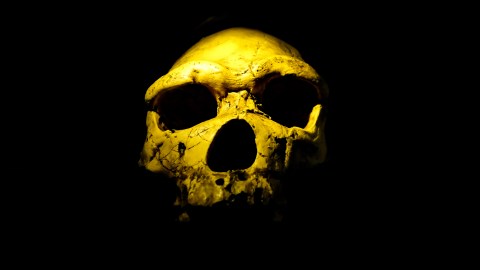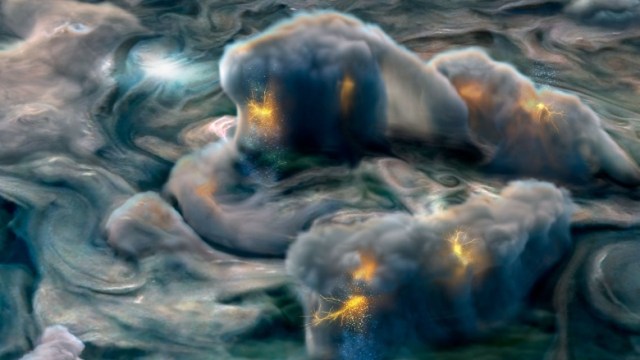DNA from an unknown ancestor found in modern humans

Shutterstock/backpacker79
- A new study of the genomes of Modern Humans, Neanderthals, and Denisovans suggests the three were interbreeding quite often.
- The study also found DNA from an unidentified, archaic human ancestor which we inherited from the Denisovans.
- Homo Erectus is the most likely source of this DNA.
Modern Humans are the last members of the genus Homo. While we’ve managed to outlast an extensive list of cousins and genetic ancestors, their genetic heritage lives on through us. More than a few studies have reported that many people today can trace their ancestry back to the Neanderthals and the Denisovans.
A new study suggests that the DNA of an even older ancestor lives in through us, and has some startling implications for the sex lives of our ancient ancestors.
The paper titled “Mapping gene flow between ancient hominins through demography-aware inference of the ancestral recombination graph” was published in PLOS Genetics. It’s authors used a new statistical method to analyze the genomes of two Neanderthals, a Denisovan, and two modern humans.
The new method allowed the researchers to determine when segments of one individual’s DNA are worked into the chromosomes of another. These occurrences are called “recombination events” and can be used to determine when specific genes entered our genome and provide evidence of where it came from. As an example of how this can be used, if Neanderthal DNA contained genes from another pre-human ancestor that they then passed to us, this method would identify it.
The analysis confirmed previous studies that showed that Modern Humans interbred with Neanderthals and Denisovans. However, this analysis suggests that some of this mixing took place between 200,000 and 300,000 years ago, long before what previous studies had suggested. It also indicates that more instances of interbreeding occurred than previously suspected.
Most interestingly, the researchers noticed that one percent of the DNA in the Denisovans from an even more ancient human ancestor. Fifteen percent of the genes that this ancestor passed onto the Denisovans still exist in the Modern Human genome.
Exactly who this ancestor was remains unknown, but there are some clues. The fact that this ancestor separated from the linage that would lead to modern humans about 1,000,000 years ago is the most useful one we currently have. This led the researchers to suggest Homo Erectus as the most likely candidate.
What is the next stage in human evolution?
The bane of all school teachers focusing on human evolution and the original “missing link,” Homo Erectus was the first human ancestor to leave Africa. They spread widely throughout the old world, with their remains found from Spain to Java. They resembled modern humans, though they were a tad shorter. They were the first to control fire, made tools, created artwork, and likely had rudimentary language.
It should be repeated that while Homo Erectus is the probable source of this ancient DNA, the jury is still out. Scientists would have to sequence its genome to know for sure.
Studying human evolution leads us down some very strange roads. It is increasingly clear to us that wherever there was an overlap of human species, there was interbreeding and that a considerable amount of the genetic remnants of this endure to this day. While this might get in the way of the old view of evolution as a slow climb to the humanity, the pinnacle of biological achievement, it does provide us a richer view of who we are, where we come form, and where we might be going.





